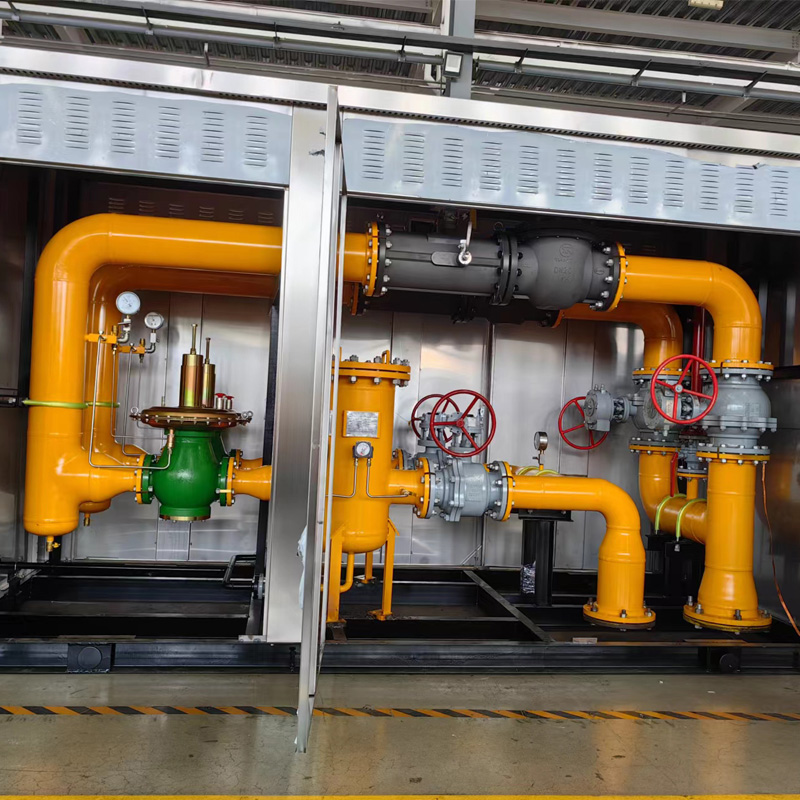
9 月 . 10, 2024 05:25
Back to list
Efficient Heat Exchanger Solutions for Optimal Thermal Management
The Importance and Functionality of Heat Exchangers
Heat exchangers are vital components widely used in various industries for transferring heat from one medium to another without the two fluids coming into direct contact. These devices play a crucial role in enhancing energy efficiency, optimizing processes, and providing comfort in a range of applications, including power generation, HVAC systems, chemical processing, and food production.
At its core, a heat exchanger operates on the principle of thermodynamics, facilitating heat transfer through conduction, convection, and sometimes radiation. The efficiency of this process is influenced by the surface area, temperature differential, and the specific heat capacity of the fluids involved. The basic design of a heat exchanger consists of two or more fluids flowing in close proximity, often separated by a wall or barrier designed to withstand temperature and pressure changes.
There are several types of heat exchangers, including shell and tube, plate, air-cooled, and double-pipe designs, each with its unique advantages and applications. The shell and tube heat exchanger is particularly common in industries that require robust construction, as it consists of a series of tube bundles enclosed in a shell. Its design allows for easy maintenance and cleaning, making it ideal for applications involving fluids that may deposit scale or contaminants.
Plate heat exchangers, on the other hand, offer a more compact design with high heat transfer efficiency
. These consist of multiple thin plates stacked together, allowing fluids to flow through alternating channels. This design maximizes the surface area available for heat transfer while minimizing the volume of the unit, making it suitable for applications where space is a constraint.heat exchanger

In HVAC systems, heat exchangers are vital for regulating temperatures, particularly in heating and cooling processes. They extract heat from the air or water, depending on the season and the system's function. For instance, during winter, heat is extracted from the building's exhaust air and transferred to fresh air intake, thereby warming it before circulation. Conversely, during summer, the process works in reverse, helping to cool the indoor environment.
Another significant application of heat exchangers is in power plants, where they manage heat transfer during the generation of electricity. Whether in nuclear, coal, or gas-fired plants, they help in condensing steam back into water for reuse in the steam cycle, thus optimizing thermal efficiency and reducing water consumption.
In the realm of chemical processing, heat exchangers are essential for maintaining optimal reaction temperatures, promoting safety, and increasing productivity. They help manage exothermic and endothermic reactions, ensuring that products are manufactured at the desired temperature, which is critical for quality control.
In conclusion, heat exchangers are indispensable in various sectors, enhancing energy efficiency, reducing operational costs, and maintaining safety. As industries continue to innovate and aim for sustainability, the demand for advanced heat exchanger technologies is expected to grow. Continuous research and development in this field will lead to improvements in efficiency and reliability, solidifying the role of heat exchangers as a cornerstone of modern engineering practices.
Next:
Latest news
-
Unlocking The Quality Gas Pressure ReducersNewsNov.01,2024
-
The Role of Gas Pressure Reducing StationsNewsNov.01,2024
-
The Importance and Functionality of Safety Relief ValvesNewsNov.01,2024
-
The Essential Role of Safety Valves in Natural Gas ApplicationsNewsNov.01,2024
-
The Essential Role of Gas Pressure RegulatorsNewsNov.01,2024
-
Enhance Your Premium Gas FiltersNewsNov.01,2024

